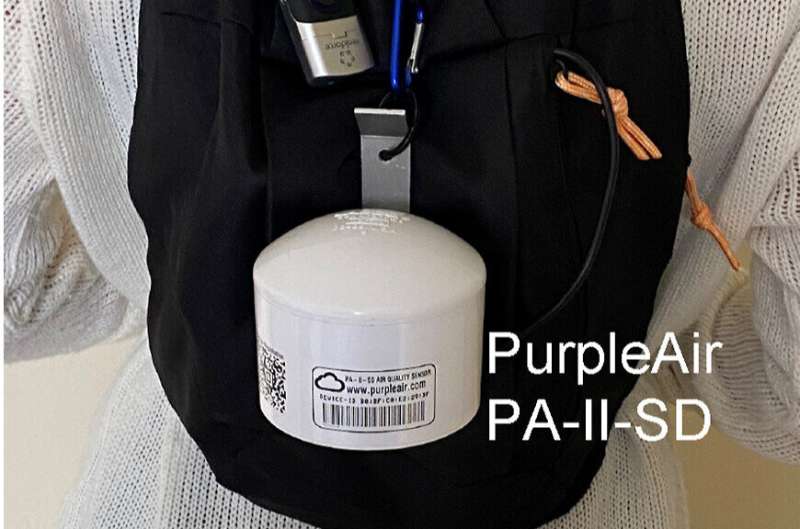
Better air quality monitoring techniques are needed to assess the acute impacts of pollution on people with asthma, new research by the University of Stirling has found.
Researchers say wearable monitors offer more accurate data, which could lead to better management of the lung condition.
The study found that despite short-term exposure to microscopic particulate matter being linked with asthma symptoms, such as coughing, wheezing and breathlessness, participants did not increase the use of reliever inhalers.
The study, titled “Personal exposure to fine particulate matter (PM2.5) and self-reported asthma-related health,” was published in the journal Social Science and Medicine.
Researchers in the Faculty of Natural Sciences say this suggests that people with asthma may not be linking symptoms to invisible air pollution, compared to more visible triggers such as pet dander and cold weather.
The study saw 28 people with asthma in Scotland wear customized air quality monitors to track their personal exposure to air pollution for one week. Participants kept a detailed time-activity diary, noting their activities, locations, symptoms, and inhaler use. Exposure to air pollution was later assessed against self-reported symptoms in order to assess the acute impact.
Scotland’s air quality monitoring network consists of around 100 sites. Previous studies exploring the link between air pollution exposure and individual-level asthma symptoms have been based on data from fixed-site air quality monitors, which can often be many miles from a participant’s home address.
University of Stirling researchers believe this is inadequate and instead propose personal exposure monitoring so that symptoms can be managed more effectively. They also suggested that health care professionals could use the data in asthma management strategies and called for more research into how it could be used in clinical practice.
Pollution exposure
Ph.D. researcher Amy McCarron, who led the study, said, “Current air quality monitoring methods are not designed to detect personal exposure to air pollution and are inadequate to detect acute individual-level health impacts. To uncover this requires high resolution data, both in terms of air quality data and health data. This study demonstrates the important role of personal exposure monitoring and self-monitoring for asthma in tracking how air pollution affects asthma-related health.
“We also believe that the lack of association between exposure to air pollution and reliever inhaler use is important. We propose that this may be due to air pollution being largely imperceivable compared to other triggers, and consequently, people aren’t using their reliever inhalers to alleviate asthma symptoms triggered by air pollution exposure.”
Exposure to air pollution is a known asthma trigger. In 2013, nine-year-old London resident Ella Kissi-Debrah died following an asthma attack and in December 2020 she became the first person to have air pollution officially recognized as a cause of death on a death certificate.
She had been exposed to excessive levels of pollution, and in the three years before her death, she had multiple seizures and was admitted to hospital 27 times.
Air pollution causes seven million premature deaths every year, with an estimated 2,500–3,500 of those in Scotland.
McCarron added, “The widely publicized case of Ella Kissi-Debrah has highlighted the critical impact of air pollution on health. In our research, we advocate for the incorporation of personal exposure monitoring in the management of asthma-related health.
“By further refining this approach, assessing its capacity to inform effective behavior change interventions, and testing the feasibility of its application, we hope to provide individuals with asthma a valuable tool to gain more control over their own exposures and health.”
More information:
Amy McCarron et al, Personal exposure to fine particulate matter (PM2.5) and self-reported asthma-related health, Social Science & Medicine (2023). DOI: 10.1016/j.socscimed.2023.116293
Journal information:
Social Science and Medicine
,
Social Science & Medicine
Source: Read Full Article